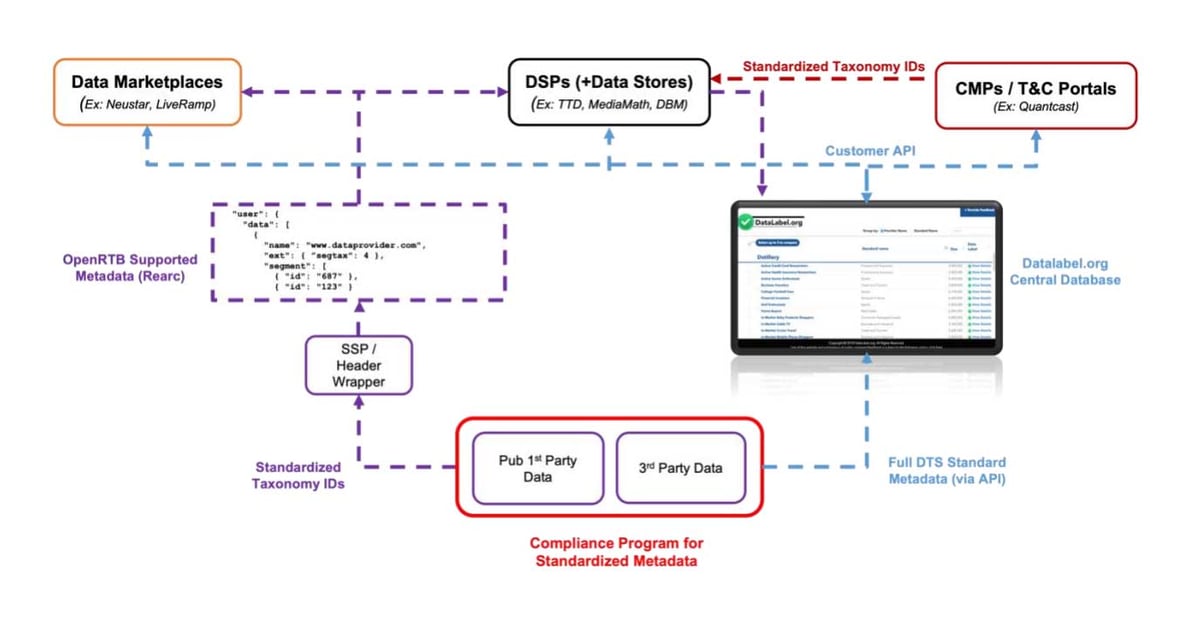In February 2022, the Interactive Advertising Bureau (IAB) Tech Lab introduced a new addressability specification called “Seller Defined Audiences” (SDAs).
SDAs enable publishers to segment first-party audience data into cohorts and pass IDs for such cohorts in OpenRTB bid requests to demand-side platforms (DSPs) for decisioning.
SDAs reduce reliance on third-party user identifiers and broad-brush contextual solutions. They empower publishers to segment first-party audiences into unique relevant cohorts, based around user activity across multi-platform properties.
Below are some frequently asked questions about SDAs that hopefully will inform the reader about this new specification and how it’s relevant to digital publishers.
What Are Seller Defined Audiences (SDAs)?
SDAs are a new addressability specification from the IAB Tech Lab that came out of Project Rearc, the IAB’s reaction to the upcoming Google deprecation of third-party cookies, scheduled for 2023.
SDAs allow publishers to leverage valuable first-party data and scale it, without risking data leaks or relying on third-party identifiers. SDAs also don’t rely on deals-based mechanics or PMP; they operate within the bidstream as OpenRTB bid-request metadata. What this means is that SDAs can operate seamlessly across ORTB-supported app, browser, and CTV environments.
SDAs require publishers to break down their users into one or more of IAB’s Audience Taxonomy categories. Currently, there are nearly 1,700 categories available, based on three classifications: Interest, Demographic, and Purchase Intent.
What Are the Three Steps SDAs Rely on?
The three basic steps SDAs rely on are:
- A publisher analyzes their first-party audiences and — along with their data management platform (DMP) — maps users to one of the IAB’s roughly 1,700 Audience Taxonomy categories. Publishers do this by using a standardized transparency schema called the Data Transparency Standard (DTS).
- The publisher incorporates the segment ID for the associated taxonomy in their bid request via the ORTB 2.6 spec. The IAB recommends using Prebid.org header bidding integrations for passing SDA values, but alternative ways to achieve this exist.
- The DSP gets the bid request, as well as the SDA metadata (the taxonomy Unique ID), and makes a decision whether to bid or not.
Data flows through the bidding and delivery ecosystem can be envisioned as:
What’s the Anatomy of an SDA Cohort?
The concept of audience cohorts isn’t new, but the mechanics behind SDAs are.
Unlike solutions that are algorithmically generated, such as the previously announced Google Topics, SDAs don’t rely on probabilistic logic or machine learning to make best guesses about user attributes.
By contrast, SDAs empower publishers to present their collections of audience insights and first-party data across all their properties. Additionally, Google Topics makes use of a far broader scope of cohort groups — just 350 presently — as opposed to the fine granularity provided by a database of 1,700 SDA cohorts.
What this means is that, rather than an automated platform deciding that a user likes “Sports,” publishers are able to assign highly specific SDA cohorts, such as “Interest > Sports > Equestrian Sports > Horse Racing” and thus, help advertisers to be much more granular with their targeting. The results are more “yes” bids and increased incremental revenue.
What Do Seller Defined Audiences Mean for Publishers?
From a publisher’s perspective, the most interesting element of SDAs is that they offer a way to monetize specific, granular first-party data, without a need to depend on any third-party cookie, tech partner, or ID. SDAs can also do this externally to any individual technical environment, which means that users across apps, browsers, and CTV can be incorporated in SDA cohorts.
Additionally, publishers can retain complete control over data, instead choosing to assign associated segment IDs on their sides and pass them via bid requests for demand-side decisioning.
But importantly, SDAs utilize preexisting programmatic technologies — Prebid, OpenRTB, DTS, etc. — to achieve privacy-first cohort-based targeting solutions. This mirrors trends in the industry currently that project that there will be no single solution for preserving addressability in the cookie-less world, but instead, there will be a suite of solutions that will be unique for each programmatic player.
IAB said quite succinctly in their recent announcement that “SDAs make no claims of being silver bullets for the industry but should be [looked at] as valuable tools in our toolbox.” Thus, just like many of the other cookie-less solutions the industry is considering, SDAs might be worth looking at to see if they’re a good match for your business.
Align Your Business to Grow 0pd and 1pd Now
Though the best alternatives to 3rd party cookies and ad targeting continue to evolve, publishers can act now to be better aligned to collect and leverage visitor data. Admiral, the Visitor Relationship Management (VRM) platform, can quickly enable a publisher to register and authenticate users, grow newsletter signups, collect emails and social media followers, collect consent preferences, and much more.
Admiral was a 2022 selection for the Inc 5000 list of the fastest-growing companies in the U.S. In fact, Admiral was ranked highest on the list for marketing automation for publishers, subscription management, and adblock revenue recovery.
See how VRM can grow your visitor relationships and revenue. Schedule a demo today.






